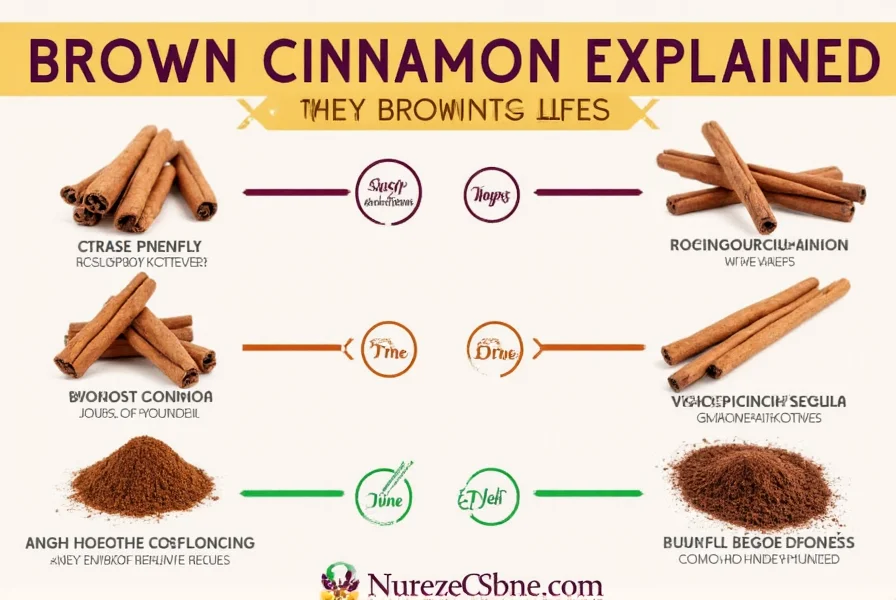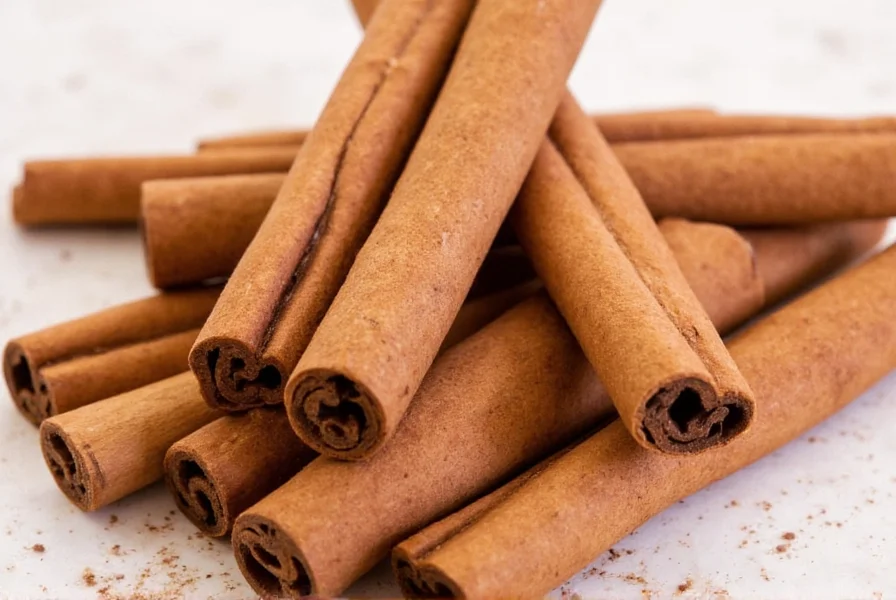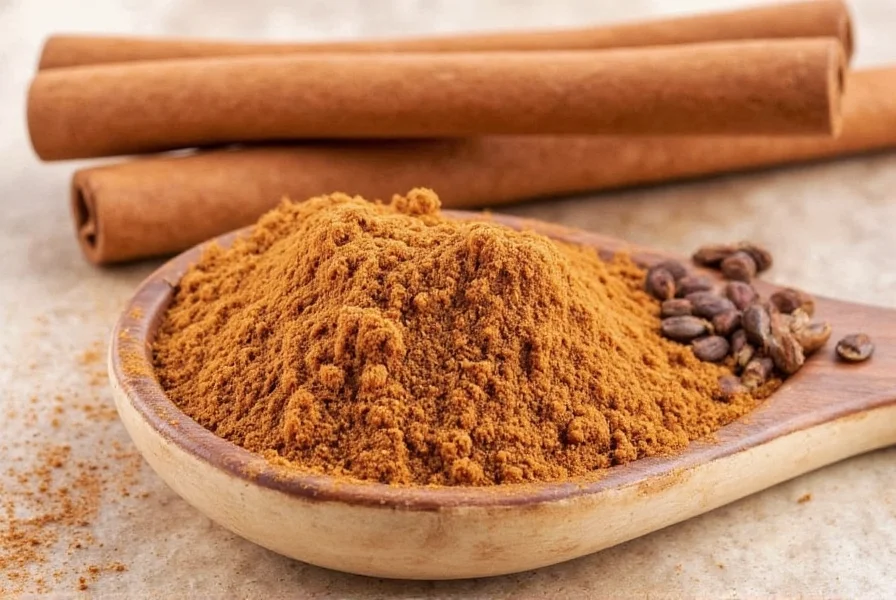When searching for \"brown cinnamon,\" most consumers are actually encountering the more widely available Cassia cinnamon, which naturally appears in rich brown tones compared to the lighter, tan-colored Ceylon variety. This confusion stems from the visual characteristics of different cinnamon types rather than an official product category.
Understanding Cinnamon Varieties
Cinnamon isn't a single spice but rather comes from several related tree species. The two primary types found in markets worldwide represent distinct botanical varieties with noticeable differences in appearance, flavor profile, and chemical composition.
| Characteristic | Cassia Cinnamon | Ceylon Cinnamon |
|---|---|---|
| Color | Deep reddish-brown | Light tan to golden brown |
| Flavor Profile | Strong, intense, slightly bitter | Mild, sweet, complex |
| Coumarin Content | High (2-5%) | Very low (0.04%) |
| Origin | China, Indonesia, Vietnam | Sri Lanka, India |
| Rolling Pattern | Single thick layer | Multiple thin layers |
Why the \"Brown Cinnamon\" Confusion Happens
The term \"brown cinnamon\" typically emerges from several common misunderstandings in home kitchens and grocery shopping:
- Visual identification - Consumers notice the darker brown color of Cassia compared to other spices
- Recipe confusion - Many baking recipes mention \"cinnamon and brown sugar\" which sometimes gets misremembered as \"brown cinnamon\"
- Labeling practices - Some manufacturers don't distinguish between cinnamon types on packaging
- Regional terminology - In certain markets, Cassia is simply called \"cinnamon\" without specification

Culinary Applications and Flavor Profiles
Understanding the difference between cinnamon varieties significantly impacts cooking results. Cassia's robust flavor stands up well in hearty dishes like stews, curries, and strongly spiced baked goods where its intense character won't be overwhelmed. Its higher oil content makes it particularly effective in recipes requiring extended cooking times.
Ceylon cinnamon's more delicate flavor profile shines in subtle applications where you want spice notes without overwhelming other ingredients. Professional pastry chefs often prefer Ceylon for delicate desserts, custards, and light-colored sauces where Cassia's stronger flavor and darker color would dominate or discolor the final product.
Health Considerations Between Cinnamon Types
The coumarin content difference between cinnamon varieties represents the most significant health consideration. Cassia contains substantially higher levels of coumarin, a natural compound that in large quantities may cause liver issues in sensitive individuals. While occasional culinary use presents minimal risk, those consuming cinnamon regularly for health benefits should consider these factors:
- Daily Cassia consumption exceeding 1-2 teaspoons may approach recommended coumarin limits
- Ceylon provides similar antioxidant benefits with negligible coumarin content
- Individuals with liver conditions should consult healthcare providers about cinnamon consumption
- Children's smaller body mass makes coumarin exposure more significant
How to Identify Cinnamon Types When Shopping
Without clear labeling, consumers can use several practical methods to distinguish between cinnamon varieties:
- Examine the stick structure - Cassia forms a single thick layer while Ceylon has multiple thin concentric layers
- Check the color - Cassia appears darker reddish-brown while Ceylon is lighter tan
- Smell the spice - Cassia has a more intense, slightly medicinal aroma compared to Ceylon's sweeter fragrance
- Read ingredient lists - Look for \"Cinnamomum cassia\" versus \"Cinnamomum verum\" (true cinnamon)
- Consider the price - Ceylon typically costs 2-3 times more than Cassia due to production differences

Practical Buying Guide for Home Cooks
When selecting cinnamon for your kitchen, consider these practical recommendations based on intended use:
- For everyday baking where strong spice notes work well (cinnamon rolls, snickerdoodles): standard Cassia works perfectly
- For delicate desserts, custards, or light-colored sauces: choose Ceylon for its subtle flavor
- For health-focused consumption (daily cinnamon tea or supplements): Ceylon is preferable due to lower coumarin
- For savory applications like curries or meat rubs: Cassia's robust flavor holds up better
- When gifting or for special occasions: premium Ceylon offers a more refined experience
Understanding the distinction between cinnamon varieties transforms how you approach spice selection. Rather than searching for the non-existent \"brown cinnamon,\" focus on selecting the appropriate cinnamon type for your specific culinary application. This knowledge empowers you to make informed choices that enhance your cooking results while addressing any health considerations related to regular cinnamon consumption.
Frequently Asked Questions
Is brown cinnamon the same as regular cinnamon?
What's commonly called \"brown cinnamon\" is typically Cassia cinnamon, which is the standard \"regular cinnamon\" found in most supermarkets. It has a darker brown color compared to Ceylon cinnamon, which is lighter tan. Cassia makes up about 90% of cinnamon sold in the United States.
Why does my cinnamon look brown?
Cinnamon naturally appears brown because it's made from tree bark. Cassia cinnamon has a deeper reddish-brown color due to its higher oil content, while Ceylon cinnamon appears lighter tan. The brown color intensifies when cinnamon is ground, as the increased surface area exposes more of the spice's natural pigments.
Can I substitute brown sugar cinnamon for regular cinnamon?
\"Brown sugar cinnamon\" typically refers to a flavor combination, not a specific cinnamon type. If a recipe calls for this, it means to use regular cinnamon with brown sugar. You cannot directly substitute this combination for plain cinnamon as the sugar content would alter your recipe's liquid ratios and sweetness level.
Which cinnamon is better for daily consumption?
Ceylon cinnamon is generally recommended for daily consumption due to its significantly lower coumarin content. While Cassia contains 2-5% coumarin, Ceylon contains only about 0.04%. For those using cinnamon regularly for health benefits, Ceylon provides similar antioxidant properties without the potential liver concerns associated with high coumarin intake.
How can I tell if my cinnamon is Cassia or Ceylon?
Examine the cinnamon sticks: Cassia forms a single thick layer that's difficult to break, while Ceylon has multiple thin layers that crumble more easily. Cassia is darker reddish-brown with a stronger aroma, while Ceylon is lighter tan with a more delicate fragrance. If labeled simply as \"cinnamon\" in the US, it's almost certainly Cassia, as Ceylon is usually specifically identified.











 浙公网安备
33010002000092号
浙公网安备
33010002000092号 浙B2-20120091-4
浙B2-20120091-4